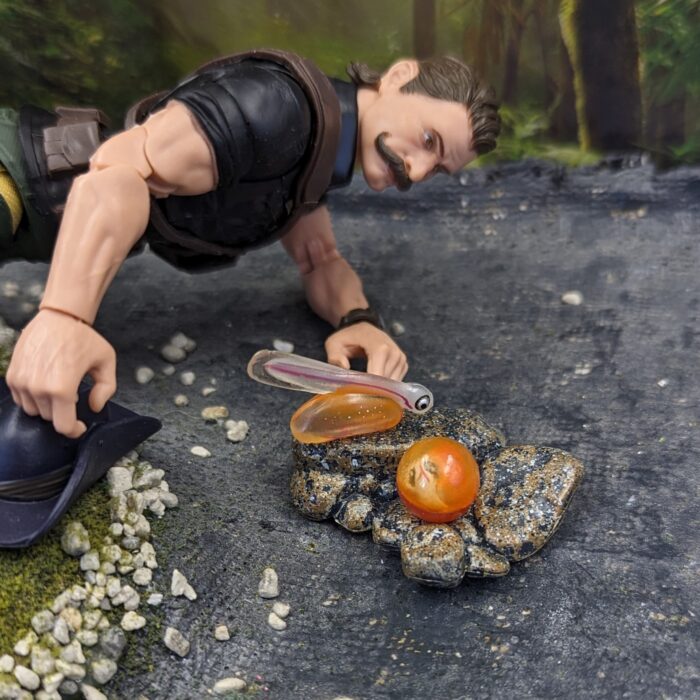This figure is the Chum Salmon egg and alevin (hatchling), Oncorhynchus keta, number 19 in Book 2, but the number 15 is stamped into it—and it’s another Special Secret (I am reposting these based on the model numbers)! The difference with this one is that the numbering would appear to place it in the Series 2 set—but the papers for series 2 start at model 16 (although they restart at 1 within each Book), so it’s a little unusual for the Secret to be ‘first’ in the series.
Classification: Fish
Silver Arowana (Mini Ancient Fish Series 2 by Bandai)
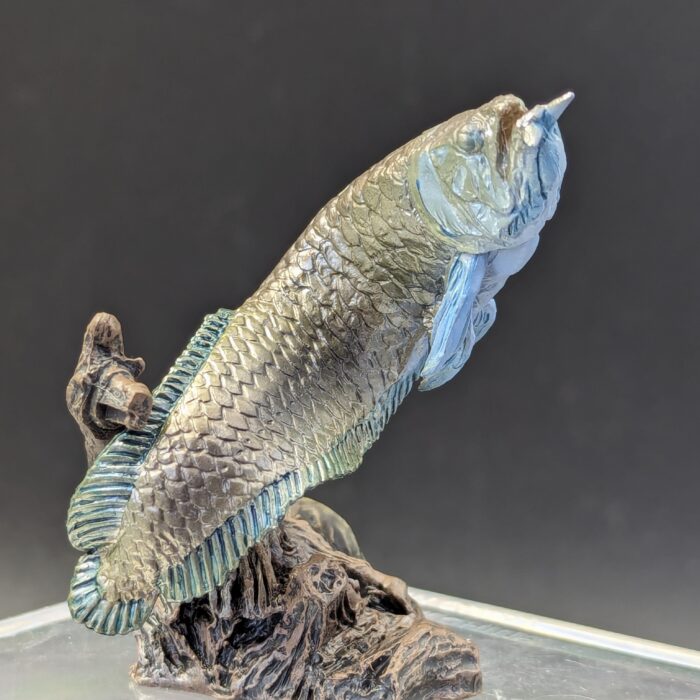
The silver arowana Osteoglossum bicirrhosum is a bonytongue fish found in black and whitewater habitats in many waterway basins of South America (except most of the Rio Negro). It is one of two species in the genus, both found in South America and occasionally overlapping in range. The species name comes from the two narrow barbels or cirrhi protruding from its lower jaw.
Asian Arowana, Gold Highback variety (Freshwater Fishes Book 1, second release by Yujin)
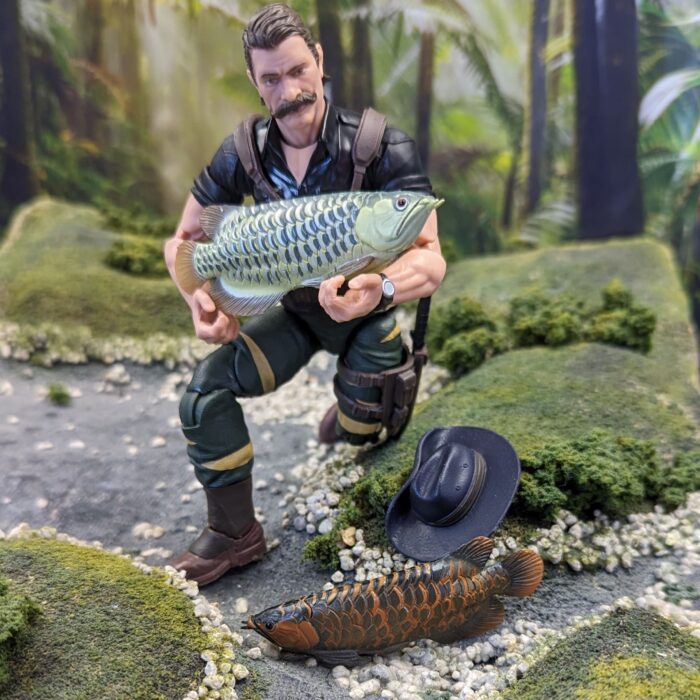
This figure is the Se-Kin Dragon Arowana AKA Malyasian Golden Highback Arowana, Scleropages formosus, although some researchers have split up the species into four, and the Gold Malaysian variety may belong in S. aureus if the species are valid—and most researchers are not yet convinced (edit–and continue not to be). Like the Yujin chili red arowana before, the figure is number 15 from the second release, but is stamped with model number 15.
Asian Arowana, Chili Red variety (Freshwater Fishes Series 1, first release reissue by Yujin)
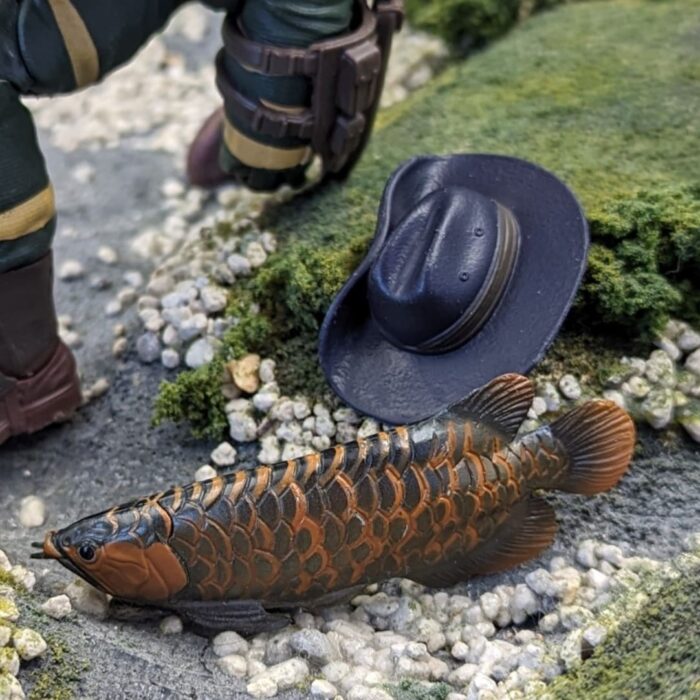
This figure is the Asian Arowana (or Asian Bonytongue, or Dragonfish), Scleropages formosus, number 15 from the first series—but it’s (one of) the Special Secret(s) (edit – when I first did these walkarounds, I thought there was only one secret figure for each series…turned out there are at least three for every release).
Barramundi, Adult and Juvenile (Freshwater Fish Pictorial Book 1, original release and re-release by Yujin)
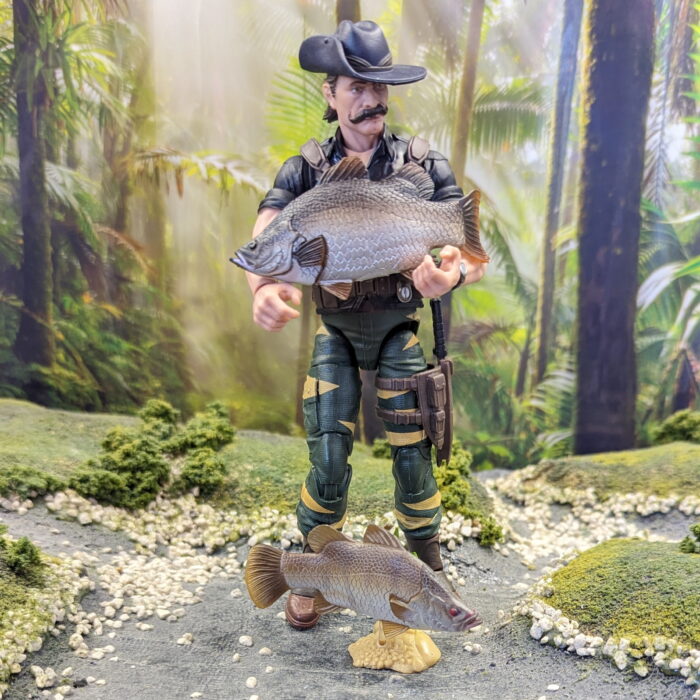
(editor note–I need to update more than normal–because I didn’t discover the adult figure until long after the original writing about the juvenile)
These figures represent the Barramundi (or Asian Seabass), Lates calcarifer. The model number is 13 from the first series (original release); the juvenile is also model number 13, but number 14 in terms of the Yujin series.
Saddled Bichir (Mini Ancient Fish Series 2 by Bandai) + bonus Elephant-snout fish
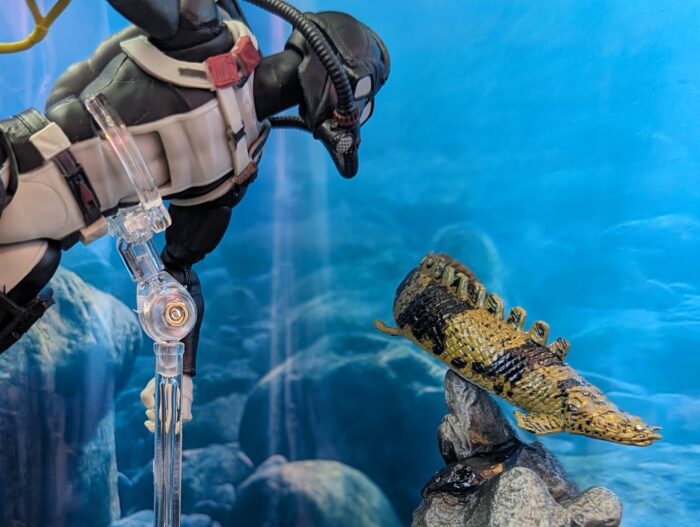
More fish! And this time, another of my favorite type of fish! Yes, it’s another bichir, and another saddled bichir Polypterus endlicheri, a species that I discussed quite some time ago (the Colorata figure). Which I suppose means I won’t need to go into too many details about the species, so I’ll be able to discuss the figure more at length–and then discuss the surprise little extra with the figure (spoiled in the title I suppose).
Three-spined Stickleback (Freshwater Fish Pictorial Book 1, revised release, by Yujin)
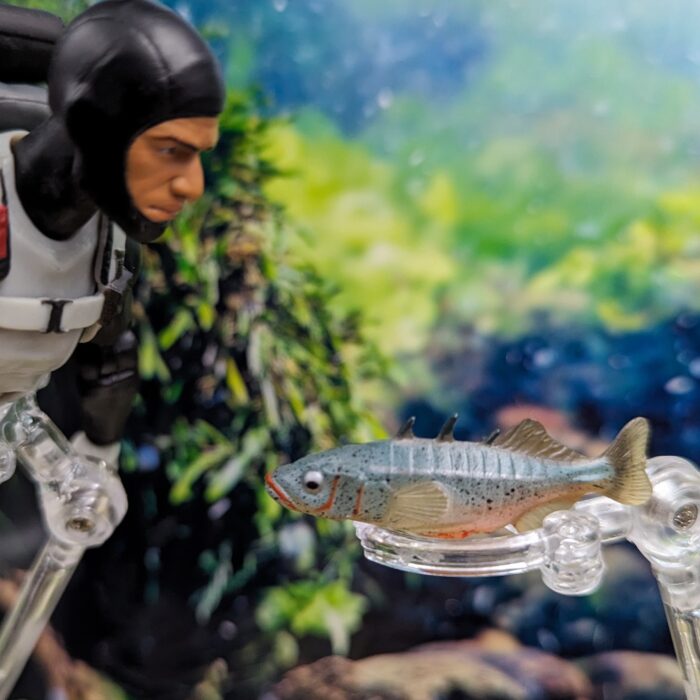
This figure is the Three-spined Stickleback (or Tiddler, or Tiddlebat, in Great Britain, because that’s kind of hilarious), Gasterosteus aculeatus, number 12 from the first series. This is the only representative of the stickleback order in the set; phylogenetically, they are grouped with more familiar spiny fish like scorpionfish, sea-robins and wolffish (at one time they were grouped with seahorses, pipefish and kin in Sygnathiformes, but that is no longer considered correct).
Japanese Rice Fish (Freshwater Fish Pictorial Book 1, revised release, by Yujin)
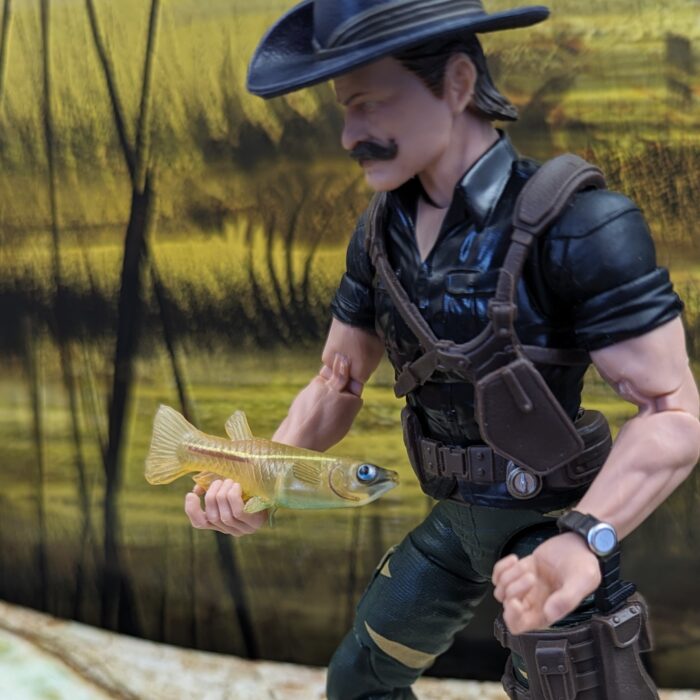
This figure is the Japanese Rice Fish (or Medaka or Japanese Killifish), Oryzias latipes, number 11 from the first series. This is the only beloniforme fish in the set; this order includes other surface-oriented fish like flying fish, needlefish and halfbeaks (but, not killifish—taxonomy can be weird). The Japanese Rice fish is found throughout Eastern Asia*, living in a wide range of shallow and slow-moving bodies of water like rice paddies, marshes, streams and tidal pools (it is a fresh- and brackish-water fish).
Round-Tail Paradise Fish (Freshwater Fish Pictorial Book 1, original release, by Yujin)
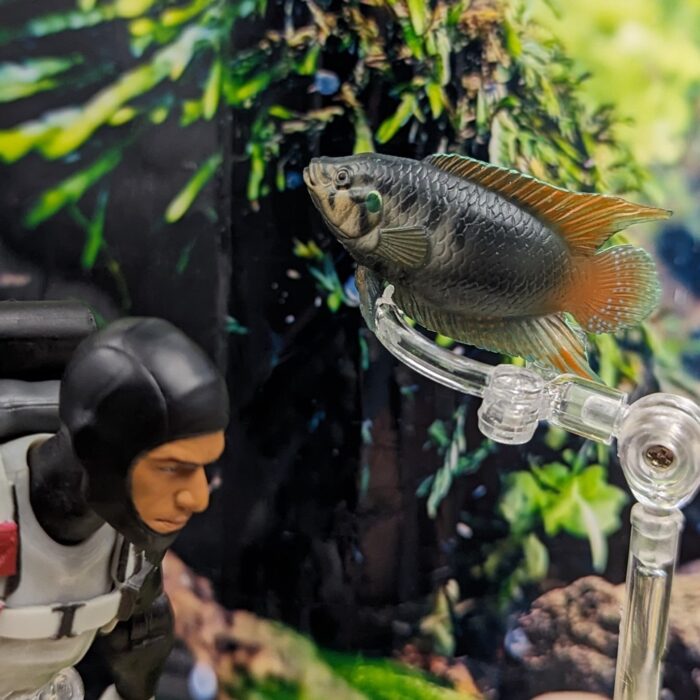
The original post: This figure is the Paradise Fish (or Paradise Gourami), Macropodus chinensis (but see note below), number 10 from the first series. This is the first and only anabantid figure in the set. The Paradise Fish is a generalist species that is found, like many of the fish in the series, in waterways throughout eastern Asia from Korea to Vietnam.
Rosy Bitterling (Freshwater Fish Pictorial Book, Series 1, revised release by Yujin)
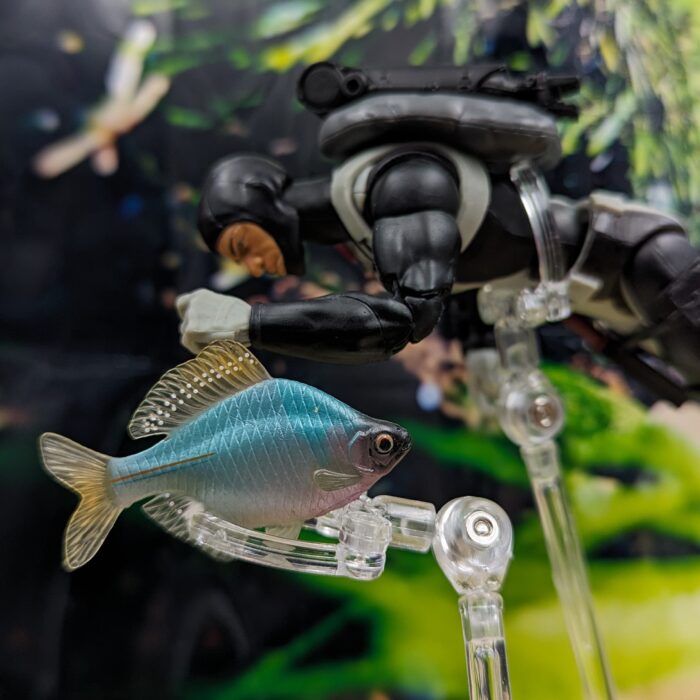
This figure is the Rosy Bitterling or Baratanago, Rodeus ocellatus, number 09 from the first series (the Yujin paper refers to it as the subspecies R.o. ocellatus but it appears all subspecies may have been collapsed together—there is some discrepancy there). The Rosy bitterling is a cyprinid (carps & minnows) found in two populations, in Japan and mainland China and Taiwan.
Goliath Tigerfish (World Fishing Monster Fish by Takara Tomy A.R.T.S.)
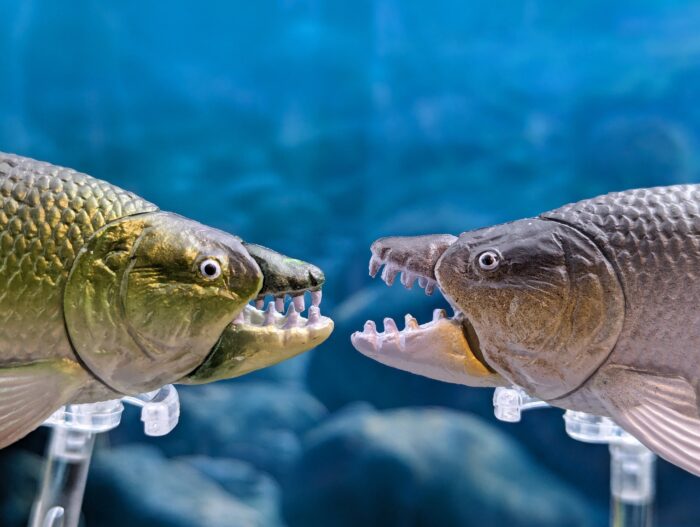
Recently, those of us that are big fans of unusual fish have been a little spoiled by Japanese sets. As is common, they are featuring some unique species that are visually or culturally striking. In this case, Takara Tomy brought us a set of fish that are notable for being scary looking, notorious, and somehow engaging for fishing (I think).
Pale Chub (Freshwater Fish Pictorial Book, Series 1, revised release by Yujin)
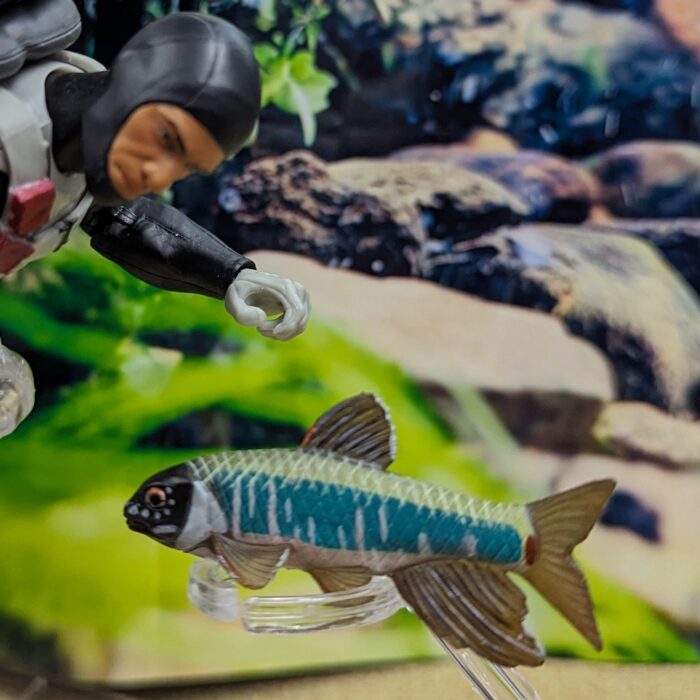
This figure is the Pale Chub, known in Japan as Oikawa, Zacco platypus, number 08 from the first series. We appear to now be beyond the salmonids; the Pale Chub is another cyprinid (‘minnow’). The Pale chub is a small carnivore that is normally found along eastern Asia from the Korean peninsula south to Vietnam.

